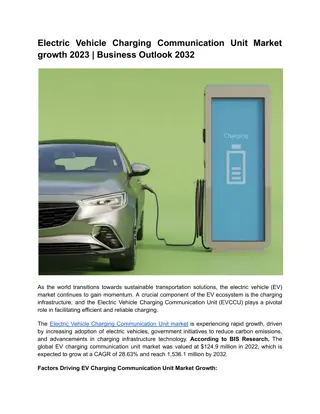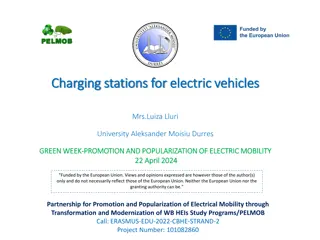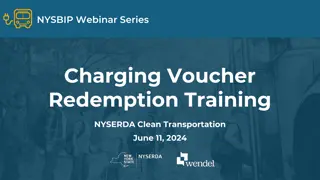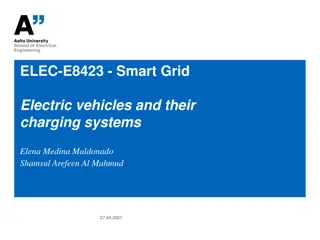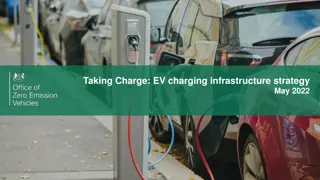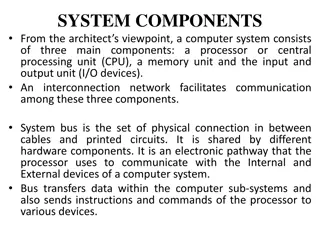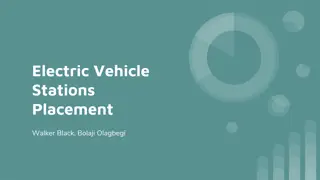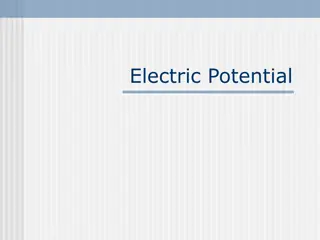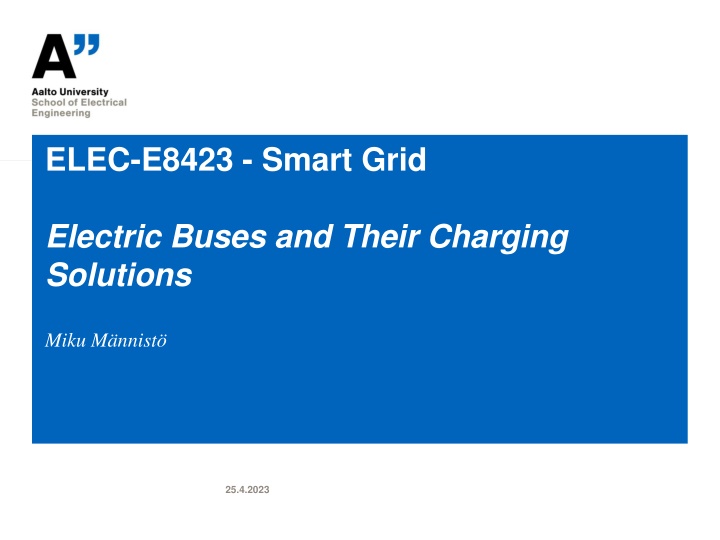
Challenges and Solutions in Operating Battery Electric Buses
Explore the benefits and barriers of battery electric buses, focusing on implementation challenges such as range anxiety and charging infrastructure limitations. Discover how weather conditions impact range and the current charging solutions being utilized. Learn about the efficiency and environmental advantages of electric buses in the Helsinki region.
Download Presentation

Please find below an Image/Link to download the presentation.
The content on the website is provided AS IS for your information and personal use only. It may not be sold, licensed, or shared on other websites without obtaining consent from the author. If you encounter any issues during the download, it is possible that the publisher has removed the file from their server.
You are allowed to download the files provided on this website for personal or commercial use, subject to the condition that they are used lawfully. All files are the property of their respective owners.
The content on the website is provided AS IS for your information and personal use only. It may not be sold, licensed, or shared on other websites without obtaining consent from the author.
E N D
Presentation Transcript
ELEC-E8423 - Smart Grid Electric Buses and Their Charging Solutions Miku M nnist 25.4.2023
Introduction 1. The benefits 2. Implementation barriers i. Range anxiety ii. Charging iii. High cost 3. Conclusions (Esa Niemel 2019) This presentation focuses on battery electric buses (BEB) and their operation in the Helsinki region 25.4.2023 Page 2/10
The Benefits Efficiency Lower operation costs Not dependent on oil (energy security) No tailpipe emissions Very low life cycle emissions compared to traditional ICE buses if green electricity is used Passenger comfortability Less noise and vibrations but nothing good without something bad 25.4.2023 Page 3/10
Implementation Barriers Range anxiety: driving range on average only 280 km Cold winters are a huge issue in Finland Driving style has an impact on consumption and thus available range Logistic issues with charging Charging times need to be considered in the timetables what if the bus is running late? Charging stations are not always interoperable Batteries are still costly which results in high investment costs 25.4.2023 Page 4/10
Range Anxiety: Weather Conditions Range reduction in freezing temperatures up to almost 40 % Consumption when below freezing is 40 45 % higher than in the summer according to a case study done in Tampere Not only does the battery have a lower charge capacity, heating uses energy too Cooling uses considerably less energy than heating (Image courtesy of HSL) 25.4.2023 Page 5/10
Charging: Current Solutions Slow and fast plug-in charging, pantograph charging, wireless charging HSL charges buses during the night at the depot and during the day at terminus Newer buses are required to run for 4 hours with one battery charge Long charging times or infrastructure too sparse High energy demand affects the grid Negatively: demand peaks, harmonics Positively: better power management, renewables (Image courtesy of HSL) 25.4.2023 Page 6/10
Charging: The Future? Vehicle-to-Vehicle Mobile Charging Vehicle Portable Charging Vehicle (Zeng 2023) 25.4.2023 Page 7/10
High Costs: Ancillary Services The buses act as an energy storage and can participate in day ahead trading or frequency reserve markets Savings in charging costs and even negative costs possible with aFRR (Fei 2023) 25.4.2023 Page 8/10
Conclusions Current charging solutions are heavily grid dependent and can cause negative impacts such as demand peaks and harmonic pollution on the power grid Future charging solutions could be wireless and en route Electric buses can serve as an energy storage and bring additional revenue by selling electricity back to the market when the price is high 25.4.2023 Page 9/10
Source material used Brinkel, N. & et. al. A comparative analysis of charging strategies for battery electric buses in wholeshale electricity and ancillary services markets. Transportation Research Part E. 2023, vol. 172. Available at: doi:10.1016/j.tre.2023.103085 Fei, F. & et. al. Exploring the profitability of using electric bus fleets for transport and power grid services. Transportation Research Part C: Emerging Technologies. 2023, vol. 149. Available at: doi:10.1016/j.trc.2023.104060 Rodrigues, A. L. P. & Seixas, S. R. C. Battery-electric buses and their implementation barriers: Analysis and prospects for sustainability. Sustainable Energy Technologies and Assessments. 2022, vol. 51. Available at: doi:10.1016/j.seta.2021/101896 Vehvil inen, M. & et. al. Setting Up and Operating Electric City Buses in Harsh Winter Conditions. Applied Science. 2022, vol. 12. Available at: doi:10.3390/app12062762 Zeng, Z. & Qu, X. What s next for battery electric bus charging systems. Communications in Transportation Research. 2023, vol. 3. Available at: doi:10.1016/j.commtr.2023.100094 https://www.hsl.fi/en/hsl/electric-buses 25.4.2023 Page 10/10


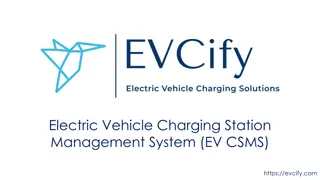
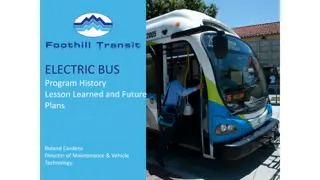
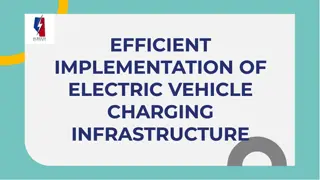
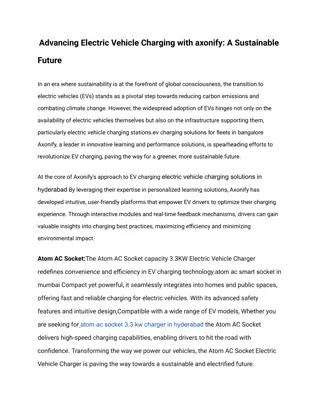
![Long-Range Wireless Charging Market Report & Analysis _ BIS Research [2024-2035]](/thumb/87166/long-range-wireless-charging-market-report-analysis-bis-research-2024-2035.jpg)

